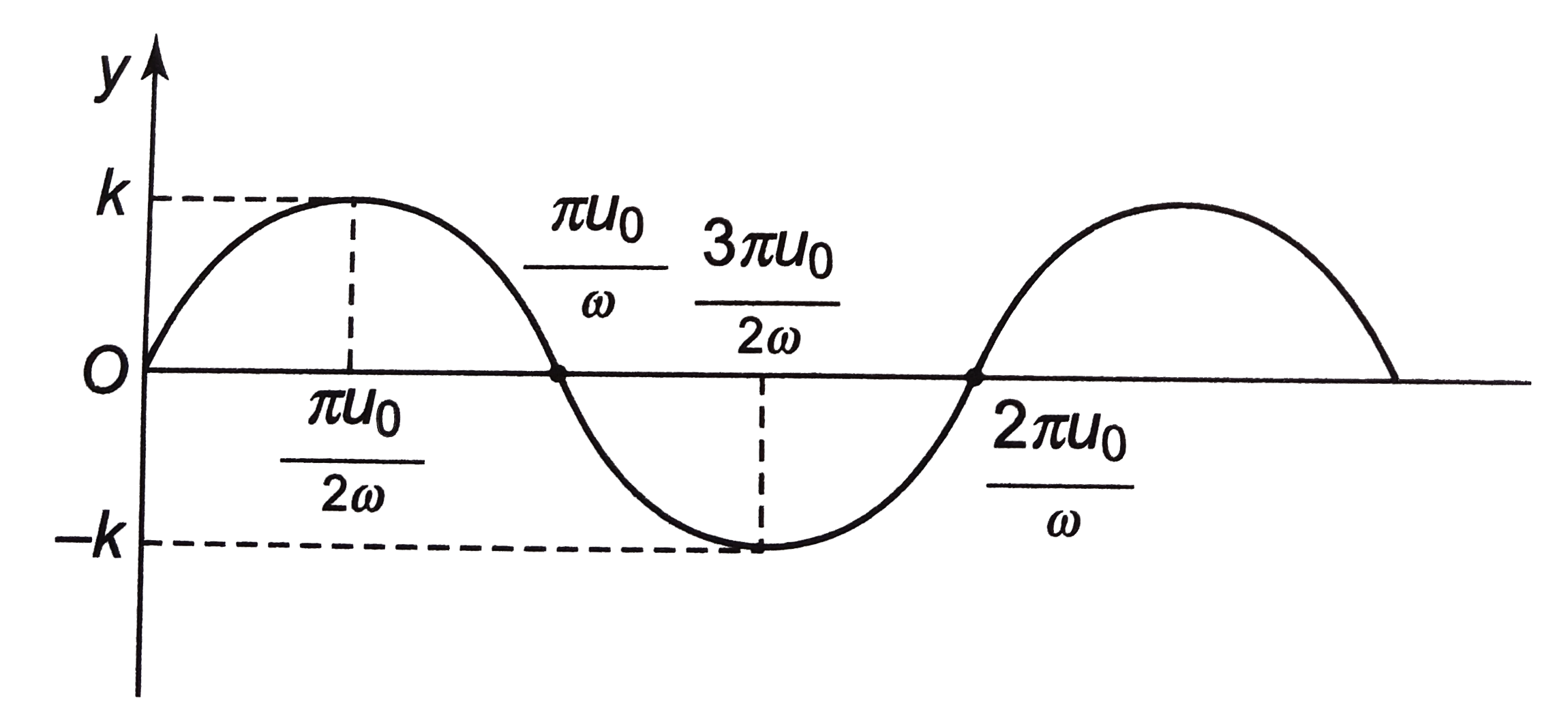A particle is moving in a plane with velocity →v=u0ˆi+kωcosωtˆj. If the particle is at origin at t=0, (a) determine the trajectory of the particle. (b) Find its distance from the origin at t=3π/2ω.
(a) →v=u0ˆi+kωcosωtˆj=vxˆi+vyˆj vx=u0
dxdt=u0⇒∫x0dx=u0∫t0dt
x=u0t (i)
⇒t=xu0
vy=kωcosωt
dydt=kωcosωt⇒∫y0dy=kω∫t0cosωtdt
y=kω∣∣∣sinωtω∣∣∣t0=ksinωt (ii)
Eliminating t from (i) and (ii), we get
y=ksinωt=ksin(ωtu0)
=ksin(ωxu0)[sine curve]
If ωxu0=π2⇒x=πu02ω,y=k
ωxu0=π⇒πu0ω,y=0

At t=3π2ω,x=u0t=3πu02ω
y=ksin(ω.3π2ω)=−k
r=√x2+y2=√(3πu02ω)2+k2
where r is the distance from the origin.
Topper's Solved these Questions
Similar Questions
A particle is moving in a plane with a velocity given by, →u=u0ˆi+(ωcosωt)ˆj, are unit vectors along x and y-axes respectively. If the particle is at the origin an t=0, then its distance from the origin at timet=3π/2ω will be
View SolutionA particle is moving in a plane with velocity given by u=u0i+(aωcosωt)j, where i and are j are unit vectors along x and yaxes respectively. If particle is at the origin at t=0.
(a) Calculate the trajectroy of the particle.
(b) Find the distance form the origin at time 3π/2ω.
View Solution
Knowledge Check
A particle moves in the xy plane according to the equation
→r=(ˆi+2ˆj)Acosωt
The motion of the particle isAon a straight lineBin an ellipseCperiodicDsimple harmonic.A particle moves in x-y plane according to the equation ¯r=(ˆi+2ˆj)Acosωt the motion of the particle is
Aon a straight line with a constant speedBon an ellipseCperiodic not SHMDsimple harmonicA particle is moving in a plane with velocity given by →u=u0ˆi+(aωcosωt)ˆj, where ˆi and ˆj are unit vectors along x and y axes respectively. If particle is at the origin at t=0. Calculate the trajectory of the particle :-
Ay=asin(u0ωx)By=asin(ωxu0)Cy=1a.sin(u0ωx)Dy=1a.sin(ωxu0)
A particle moves in x-y plane according to the equation ¯r=(ˆi+2ˆj)Acosωt. The motion of the particle is
View SolutionA particle is moving with a position vector, →r=[a0sin(2πt)ˆi+a0cos(2πt)ˆj]. Then -
View SolutionA particle moves in xy plane with a velocity given by →V=(8t−2)ˆi+2ˆj.. If it passes through the point (14,4) at t=2 sec , then give eqution of the point
View SolutionThe motion of a particle is given by x=Asinωt+Bcosωt. The motion of the particle is
View SolutionPosition vector of a particle moving in x−y plane at time t is r=a(1−cosωt)ˆi+asinωtˆj. The path of the particle is
View Solution